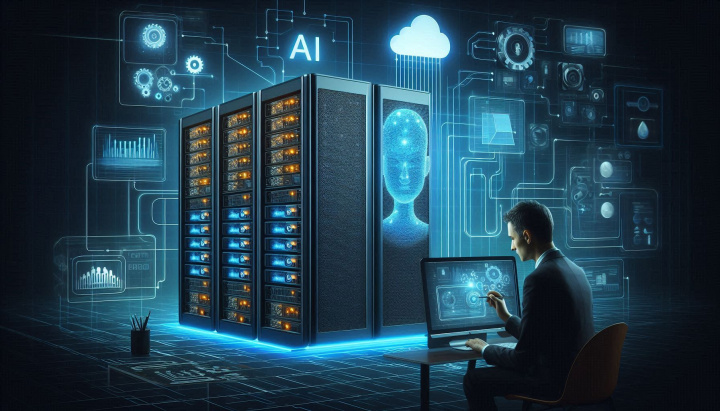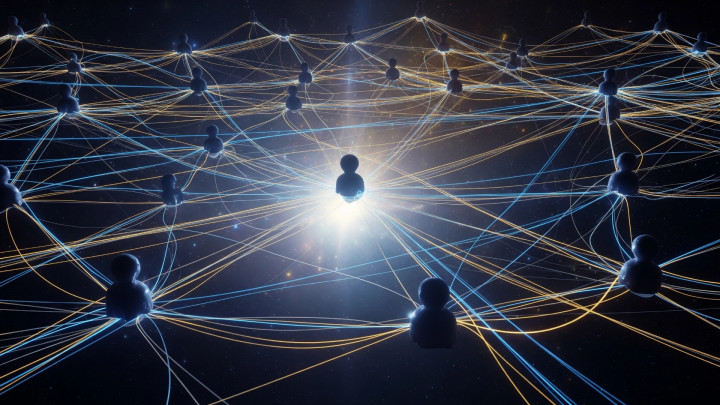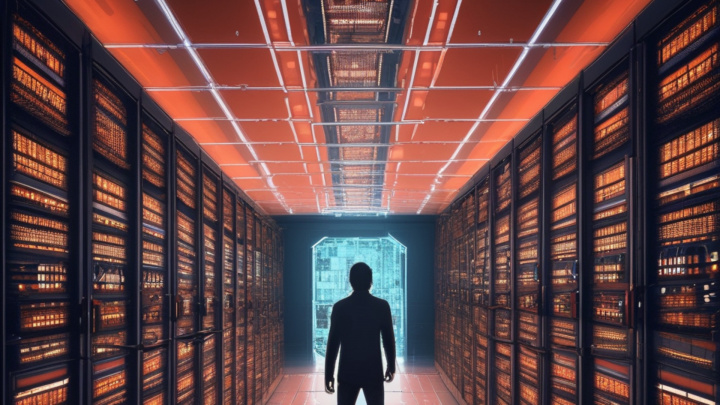Powering the Future or Draining the Planet? AI's Energy-Conscious Path Forward
The explosive growth of artificial intelligence is revolutionizing industries, but this progress comes at a significant environmental cost: a rapidly increasing demand for energy. This burgeoning energy footprint presents a global challenge, yet AI itself paradoxically offers powerful tools for energy conservation and sustainability. Navigating this complex relationship is crucial for ensuring AI develops responsibly.

The Staggering Energy Footprint of AI
Artificial intelligence technologies, particularly the training and operation of large-scale models like the Generative AI and Large Language Models (LLMs) behind platforms like ChatGPT, are incredibly energy-intensive. The complex calculations involved in training these models on massive datasets require vast amounts of computational power, primarily delivered by energy-hungry GPUs (Graphics Processing Units) housed in sprawling data centers.
Estimates suggest that AI-related activities could soon consume as much electricity as a small country, with comparisons often drawn to nations like Ireland or the Netherlands. This is deeply concerning because data centers, the backbone of AI and the digital world, already account for a significant portion – estimated at 1-2% – of global electricity consumption. Some projections warn that if the current trajectory of AI development and deployment continues unchecked, the energy demand from AI alone could potentially increase overall data center consumption significantly, perhaps even tenfold within the next decade, placing immense strain on energy grids and hindering climate goals.
This energy demand isn't limited to the initial training phase. Running AI applications (inference) also consumes substantial power, and as AI becomes more integrated into everyday services (from search engines to navigation apps), the cumulative energy cost of inference could eventually surpass that of training.
The Paradox: AI as an Energy Saver?
Despite its own high energy demands, AI holds significant potential to *reduce* energy consumption across various sectors. Its ability to analyze complex systems and optimize processes can lead to substantial efficiency gains:
- Energy Grid Optimization: AI can help manage power grids more effectively by predicting energy demand, optimizing the flow of electricity, integrating variable renewable sources (like wind and solar) more smoothly, and reducing transmission losses.
- Demand Response Programs: AI can enable smarter energy use in homes and businesses, automatically adjusting consumption based on grid conditions and pricing signals.
- Industrial Process Optimization: In manufacturing and logistics, AI can streamline operations, optimize supply chains, predict maintenance needs for machinery, and reduce waste, all leading to lower energy use.
- Smart Building Management: AI-powered systems can optimize heating, ventilation, air conditioning (HVAC), and lighting in buildings, significantly cutting energy waste.
- Accelerating Green Tech: AI is being used to speed up the discovery and development of new materials for batteries, solar cells, and carbon capture technologies.
However, deploying these AI solutions requires computational resources, creating a potential "rebound effect" where the energy saved by an AI application is offset by the energy needed to develop and run it. Evaluating the *net* energy impact of AI solutions is therefore critical.
Pathways to Energy-Efficient AI
Addressing AI's energy challenge requires a multi-pronged approach focusing on making AI itself more efficient:
- Hardware Innovation: Developing more energy-efficient processors specifically designed for AI tasks (like TPUs, NPUs, and neuromorphic chips) is crucial. Continuous improvements in GPU efficiency and specialized chip design are ongoing.
- Algorithmic and Model Efficiency: Researchers are working on creating smaller, less computationally intensive AI models through techniques like pruning (removing unnecessary parts of a model), quantization (using less precise numbers), knowledge distillation (training smaller models to mimic larger ones), and developing entirely new, more efficient architectures (e.g., sparse models).
- Data Center Efficiency: Improving the energy efficiency of data centers through advanced cooling techniques (like liquid cooling), better server utilization, waste heat recovery, and strategically locating facilities near renewable energy sources or in cooler climates.
- Integration of Renewable Energy: Powering data centers directly with renewable energy sources is the ideal solution. While purchasing Renewable Energy Certificates (RECs) is common, ensuring genuine "additionality" (i.e., causing new renewable capacity to be built) and 24/7 carbon-free energy matching remains a challenge.
- Energy-Aware Software and Scheduling: Designing software and scheduling computational tasks (especially large training runs) to minimize energy consumption or coincide with periods of high renewable energy availability on the grid.
The Imperative for Transparency and Governance
A major hurdle in tackling AI's energy problem is the lack of transparency. Accurately measuring and comparing the energy footprint of different AI models and applications is difficult due to varying methodologies and limited disclosure from tech companies. Establishing standardized metrics, monitoring protocols, and transparent reporting frameworks is essential for understanding the true scale of the problem and tracking progress towards sustainability.
Ultimately, creating an energy-conscious AI future requires a concerted effort. While AI presents significant energy consumption challenges, it also offers powerful tools for optimization and efficiency. Balancing the immense potential of AI with its environmental impact necessitates continuous innovation in hardware and software, a rapid transition to renewable energy for data centers, and a commitment to transparency and responsible development from the industry.





